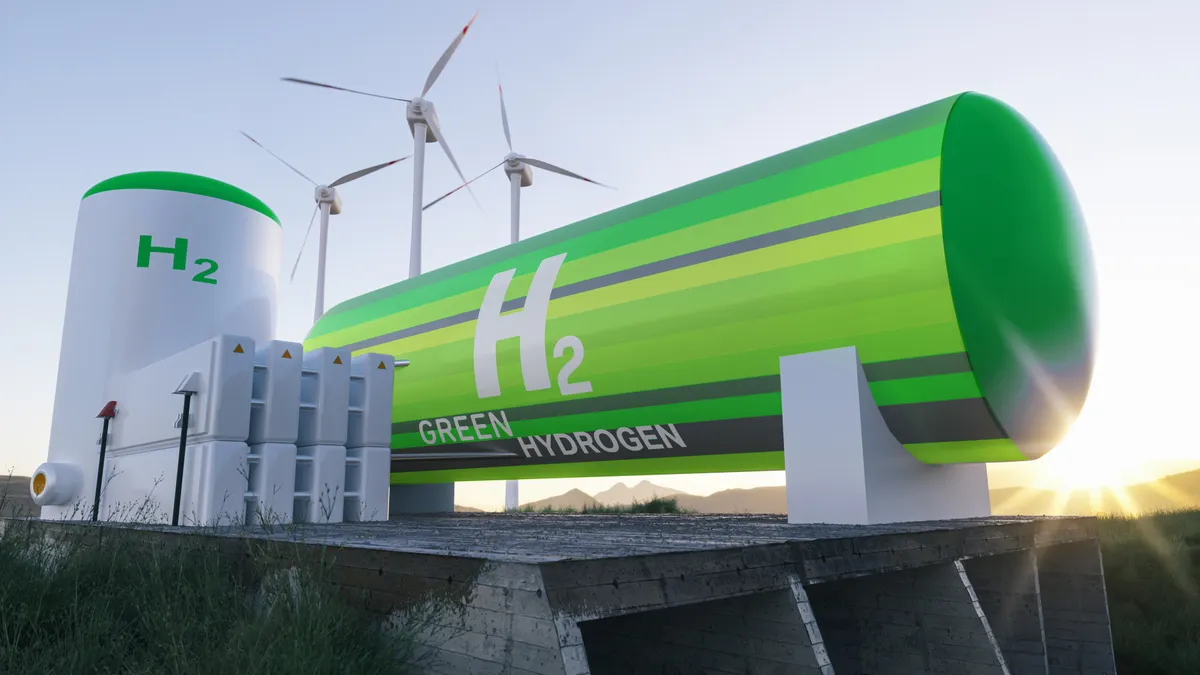Dive Brief:
-
With industry efforts already targeting $2/kg hydrogen by 2030, the $3/kg hydrogen subsidy contained in the Inflation Reduction Act could push green hydrogen prices into negative territory in some regions — and render it nearly free in many others, Brenor Brophy, vice president of project development at Plug Power, noted during the RE+ conference last week.
-
Even before the Inflation Reduction Act, many companies wanted to put money into hydrogen deals in order to get ahead of the flood of interest they anticipated would come if tax credits were announced, according to Mona Dajani, global lead for the renewable energy practice at Pillsbury Law.
-
“The day for pilots is over. It came and went in the blink of an eye,” said Margaret Campbell, director of business development for green hydrogen at Engie North America. “Everyone is looking at putting hundreds of megawatt-scale facilities on the ground, immediately. The demand is urgent, immediate, and enormous.”
Dive Insight:
A panel of hydrogen industry leaders took stock of the rapid development of their sector in recent years during a panel dedicated to the subject at the RE+ conference in Anaheim, California — and even they expressed some disbelief at recent developments, particularly in light of the Inflation Reduction Act.
Dajani said she began to see an influx of hydrogen deals within the renewable energy law practice at Pillsbury just before the onset of Covid-19. Utilities, pipeline companies, and oil and gas majors expressed an interest in the niche commodity as a potential means of decarbonizing their operations. Around roughly the same time, fuel-cell startup Plug Power began to establish its own hydrogen production facilities in response to a growing need for fuel for the hydrogen-fueled forklift trucks they developed in the 2010s.
“There are a lot of companies that wanted to get market share in hydrogen in their particular niche, whether it’s transportation, feedstock or electrical generation, and they put a lot of money into research and development without backing from the DOE or tax incentives,” Dajani said. “And those companies believed very strongly that it may not make sense right now, but it will ... and they have been so much ahead of a lot of their competitors who are just starting to get into it because they can monetize the tax credits.”
There is also a sense, according to Brophy, that hydrogen could help solve some of the challenges currently jamming up the adoption of distributed renewable generation. Only a fraction of the energy consumed in the U.S. is actually supplied by the electric grid, Brophy said — oil, gas and other fuels represent the other segment. Current interconnection woes illustrate the difficulty of transitioning the entire system to grid-based energy. Hydrogen, Brophy said, offers a way around the roadblock. Hydrogen-producing electrolyzers could be islanded alongside wind or solar projects with no need for grid access, unlocking natural resources that are currently inaccessible.
“The future is absolutely electrification, but the vector to electrification includes hydrogen,” Brophy said. “Building out the grid is horrendously expensive and takes a stupid long time.”
And while oil and gas companies may be working to cut into the hydrogen sector, Brophy said, he still sees hydrogen as a “renewables play.”
“The oil and gas industry doesn’t see it that way — they see it as a path to decarbonize their own business. I wish them all well,” Brophy said. “The excuse is we need fossil-derived hydrogen because the green stuff isn’t going to ship in time and it’s going to be expensive, but we’re going to prove them wrong.”













